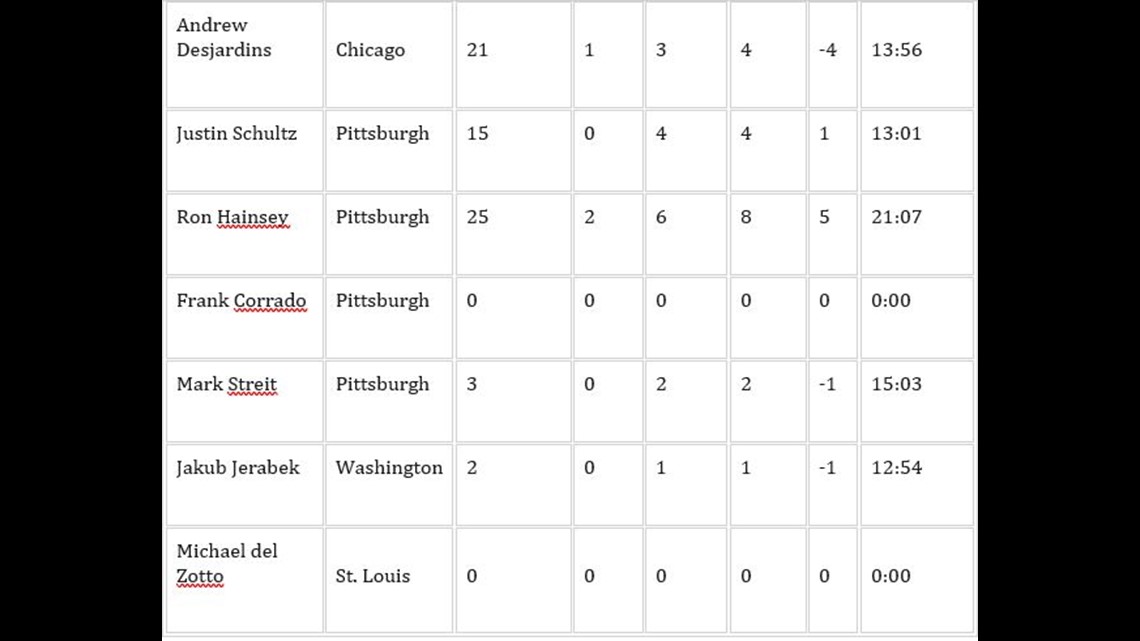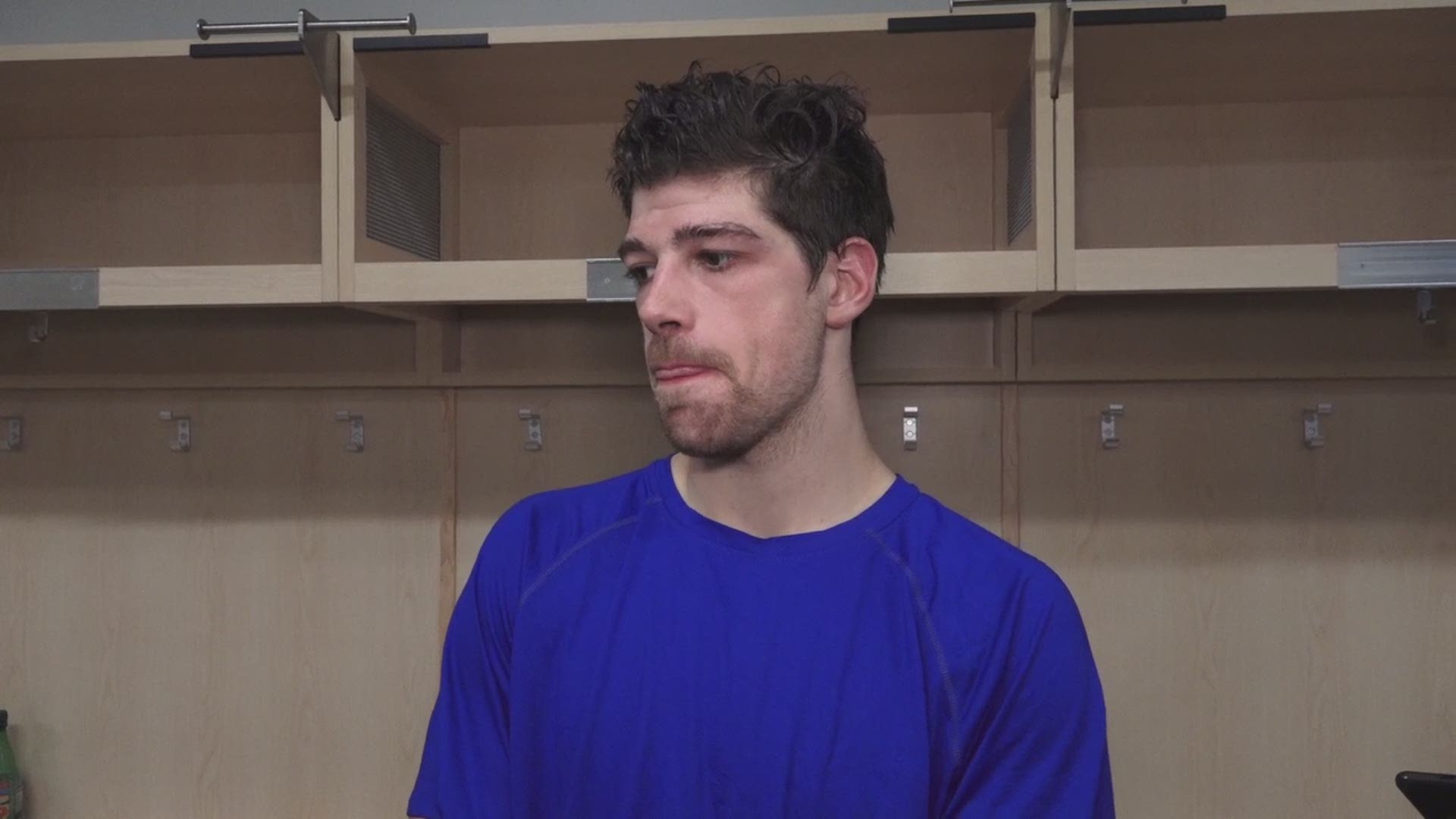ST. LOUIS — With just eight days remaining until the NHL trade deadline, Blues general manager Doug Armstrong is likely already taking and making calls with the 30 other NHL GMs.
In an interview with The Athletic’s Jeremy Rutherford last month, Armstrong pointed to Feb. 15 as one that could decide the team’s trade deadline plans. Armstrong and the team doctors are evaluating superstar Vladimir Tarasenko’s progress and looking to when he will be ready to return to play.
“We hope to have Vladi back as soon as possible,” Armstrong said. “It would be great if he was ready by the middle of March to give him a couple of weeks to get ready for the playoffs. But there’s a chance he might not be back until the middle of May. He has an injury that’s obviously month by month. We’re going to need to sit down with Vladi, our trainer and our doctor probably Feb. 15 and really hone in on where he’s at in his rehab and how it’s going to look.”
Now, the Blues must consider a replacement for defenseman Jay Bouwmeester, as well, as he recovers from his cardiac episode that occurred early last week.
Should he deem it necessary for the Blues to make a move, Armstrong has allotted himself enough time to discuss with other NHL GMs, figure out what he is willing to part with and what exactly he wants to do heading into the playoffs.
Now, the Blues must consider a replacement for defenseman Jay Bouwmeester, as well, as he recovers from his cardiac episode a few nights ago.
Just nine days sit between Saturday and the NHL trade deadline. Should he deem it necessary for the Blues to make a move, Armstrong has allotted himself enough time to discuss with other NHL GMs, figure out what he is willing to part with and what exactly he wants to do heading into the playoffs.
After all, he has a lot to consider.
Vladi: in or out?
The obvious question sits in whether Tarasenko will be ready to return to the team anytime soon. If he can come back before the playoffs, Blues management must consider salary cap implications. His salary numbers would return to the Blues' overall cap, so any acquisitions would need to account for the Blues remaining cap compliant.
If it's obvious that Tarasenko will be out until at least the start of the postseason, a little more flexibility is available to the St. Louis team. There is no salary cap in the playoffs. If Tarasenko remains unavailable through the regular season, the Blues could fill his spot with a player, or players, making around the same amount he is. This would truly bolster the lineup, especially once Tarasenko is available to return to the active roster.
What the trade deadline has done for past Cup winners
With the exception of Michael del Zotto, the 2019 Stanley Cup champion Blues didn't make any major moves at the trade deadline to improve their playoff chances. With the significant losses of Tarasenko and Bouwmeester, many fans are hoping history will not repeat itself this time around.
But are deadline acquisitions really that key to winning? The five previous league champions are all over the map in this regard.
Here's a look at each Stanley Cup winner's trade deadline moves since 2015:
2015 Chicago Blackhawks
Acquired: Kimmo Timonen (PHI), Antoine Vermette (ARZ) and Andrew Desjardins (SJS)
Traded away: 2015 2nd round pick & 2016 4th round pick, Klas Dahlbeck & 2015 1st round pick Ben Smith & 2017 7th round pick
2016 Pittsburgh Penguins
Acquired: Justin Schultz (EDM)
Traded away: 2016 3rd round pick
2017 Pittsburgh Penguins
Acquired: Ron Hainsey (CAR), Frank Corrado (TOR) and Mark Streit (TBL)
Traded away: Danny Kristo and 2017 2nd round pick, Fehr, Steven Oleksey & 2017 4th round pick and a 2018 4th round pick
2018 Washington Capitals
Acquired: 2018 3rd round pick (CHI) and Jakub Jerabek (MTL)
Traded away: Michael Kempny and a 2019 5th round pick
2019 St. Louis Blues
Acquired: Michael del Zotto (ANA)
Traded away: 2019 6th round pick
As you can see, the previous Cup champs made some moves at the deadline as well, with only a few counting as major moves.
The 2015 Blackhawks are the most relatable for the 2020 Blues. Patrick Kane, the Blackhawks' superstar right winger, suffered an injury that reportedly would sideline him until at least the third round of the playoffs, so GM Stan Bowman brought in Vermette and Desjardins to shore up the offense a bit.
He also noticed a hole in his defense, as the starting six was thin behind Duncan Keith, Brent Seabrook and Niklas Hjalmarsson. This was the reason he acquired the newly available Timonen, who had missed most of the season due to blood clots in his right leg and both lungs.
Kane returned much sooner than expected, ready for play at the beginning of the playoffs.
The rest of the deals noted above provided mostly depth in case of injury or, in the Penguins' case in both years, adding defense to a depleted lineup.
In the way these acquisitions were used is also important to note. Here's a look at each players' contributions in each team's postseason championship run.




Major moves aren't dominating here (Ryan Miller to the Blues or Martin Hanzal to Minnesota come to mind). Teams that are successful typically aren't the big buyers in February and March. If a GM sees a spot of weakness, the deadline is the final chance to strengthen the problem area.
Not just this run, but others in the near future
The Blues’ window to win another Stanley Cup is wide open, as Tarasenko, Colton Parayko, Ryan O’Reilly, Braden Schenn and Jaden Schwartz are locked up for the next few seasons. Armstrong will consider that this isn’t the only year for the Blues to capture their second title; sure, back-to-back sounds nice and it’s something that would sit atop his resume, but it’s not an imperative task.
Will a deal hinder us in the future? Can we afford a player who may have another year left on his contract?
These are just some of the questions that Armstrong is considering when discussing trades. The goal is to not only win again, but again and again and again, for as long as the window stays open. If Armstrong finds a deal that not only can benefit this postseason, but next postseason, that is one that he would likely consider over a rental for one playoff year.
Impending free agents
Of course, acquiring a player who sticks with the team would be great, but salary cap implications always come into play. This summer, captain Alex Pietrangelo becomes a free agent. The 30-year-old is likely seeking a contract similar to Nashville’s Roman Josi, who recently inked an eight-year, $72.472 million extension. An average cap hit of over $9 million would prove to be problematic for the Blues, who already have a $43.125 cap hit tied into seven players (Tarasenko, O’Reilly, Schwartz, Schenn, Parayko, Alexander Steen and Justin Faulk). This equates to about 53% of the current $81.50 million salary cap ceiling. That number is expected to go up a touch in 2020-21, but that is a large chunk of cap already invested into the team’s core.
Add in that depth pieces Sammy Blais, Jacob de la Rose, Vince Dunn and Mackenzie MacEachern become restricted free agents, and the club finds itself in quite the financial bind. Thinking about the near future, Armstrong may have his hands tied in terms of player acquisition within the next week and a half.
---
With the Blues' recent struggles as of late (2-5-3 in their last 10 games, outscored 40-31 in that time), it's hard to believe that Armstrong isn't mulling over roster changes. Adding Tarasenko back into the mix will be a shot in the arm to the team collectively but adding more pieces for a long run could serve as a much larger jolt.
Armstrong's inactive attitude at the deadline served him well in 2019; it may need the exact opposite approach this time around if the Blues are to repeat.
Jeff can be heard weekly on Lets Go Blues Radio, the original St. Louis Blues podcast. You can find the show on Apple or Google Podcasts, Spotify or letsgoblues.com!
More Blues Coverage
RELATED: ‘At the end of the day, we’re all one big hockey family’ | Knights tribute to Blues’ Bouwmeester
RELATED: Remembering Chris Pronger's on-ice collapse after getting hit near the heart in the 1998 playoffs
RELATED: I ‘heart’ Blues shirts raise money for life-saving equipment that helped revive Bouwmeester

